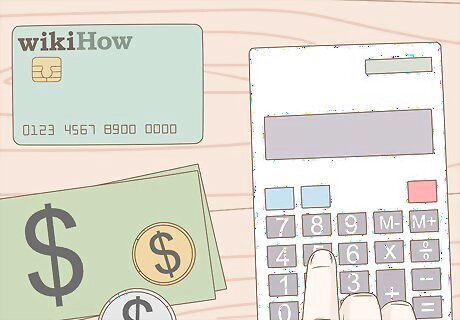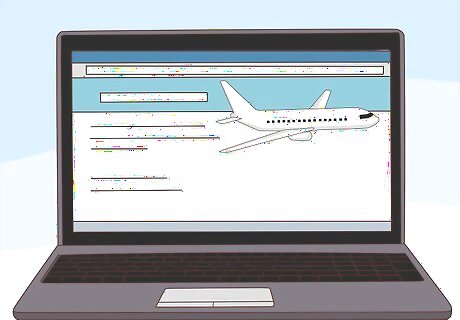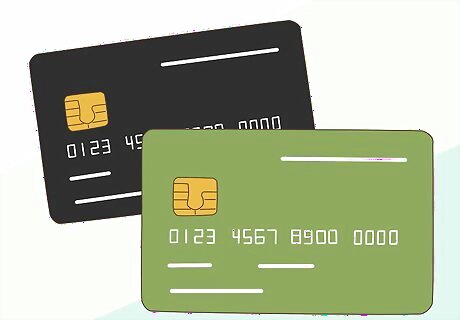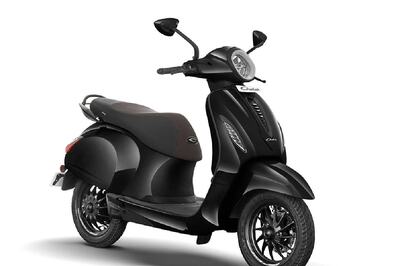
views
Planning for Shared Expenses

Research the area where you are traveling, in order to find out accurate costs. Many travel blogs, websites and books, like Lonely Planet Guides or Bootsnall.com, will tell you what the average cost of food and hotels are. Take into account currency exchange rates.

Establish what your shared expenses will be. Everyone should be comfortable with the costs that you share. Discuss any concerns you have with sharing expenses at this time.

Agree to a travel mentality. Decide if you are all committed to traveling frugally or extravagantly. Establish a general cost to aim for breakfast, lunch and dinner, to avoid meal frustrations if someone is ordering more expensive meals.

Create a budget before you leave on your trip. Include hotels, transportation, food, tips, guided tours, drinks and anything else you are likely to split. Create a table in Excel and round up all expenses slightly to account for unforeseen expenses.

Pay for large expenses, like plane tickets, separately. Since each person's financial situation is different, large expenses should be dealt with according to personal budget. Unlike smaller travel expenses, sharing large expenses can provoke stress associated with immediate reimbursement or credit card limits.

Buy a pre-paid travel card that covers your shared expenses budget. Search online for travel cards from major credit card companies, such as Visa or MasterCard. A pre-paid card can be used to pay for hotel reservations, tickets and food costs and it can be used at an ATM. In case of theft, a pre-paid card offers you more protection. Although it would be distressing to lose your shared money, a pre-paid card is not linked to your bank account. The thief will not be able to withdraw more than you planned on spending on the trip or rack up credit card debt. Make sure that if you are taking money out of an ATM with a pre-paid credit card, you split the money evenly or you pay for the services all at once.

Download an expense sharing app, such as Travel Money - Share Expenses, Conmigo or Expensure. If the people who are traveling are using smart phones, then these can act like a sophisticated expense sheet, totaling up costs after each expense.

Bring a sturdy folder or envelope to include all expense receipts. Place it in a designated area in a piece of luggage or a backpack. Whenever there is a receipt for a shared expense, place it in the envelope.

Write down the method of payment and the expense on each receipt. For instance, if you just visited a restaurant, you might write "Jamie paid" or "Travel card" and then "Lunch Day 6." Keep a marker in your envelope and make sure the expense is indicated before the receipt is filed. If someone wants to be extravagant at dinner 1 night, they can stick a note in the envelope indicating how much more their meal was than the budgeted cost. Later on, you can include this figure as you settle up the costs.

Settle up immediately when you get home. Input all of your receipts and notes into your spreadsheet. If there is extra money on a pre-paid card, you can request the balance from the bank or use it to pay off anyone who is owed money.
Saving with Shared Expenses

Plan picnics in place of restaurant meals. You can pick out food together and then pay for it using your pre-paid account. It can limit any stress involved with inequity of meal costs.

Stay in hostels. They are already suited to people who are willing to share space and costs. If you are already in a group, you may be able to reserve a room of your own. One or 2 people can share a room with other people for a reduced rate.

Stay in condos, apartments or cabins. These options can be cheaper than hotels when split amongst a group. They also have more amenities, like kitchens or coffee pots, which can save money on restaurant bills.

Share expenses for amenities like toothpaste, hairspray, shampoo and conditioner. You will save money, pack lighter and you may end up using the majority of it up by the end of your trip.



















Comments
0 comment